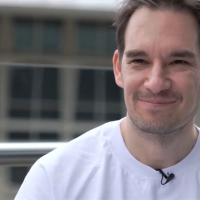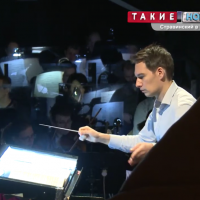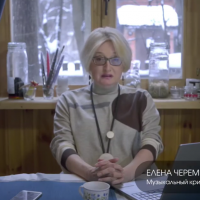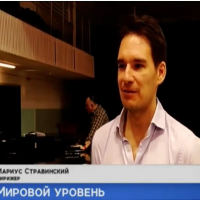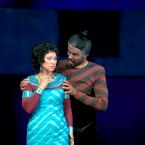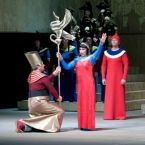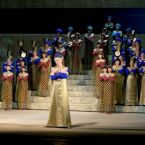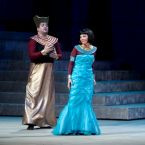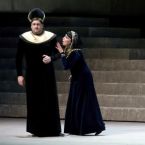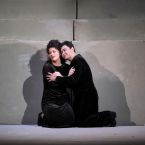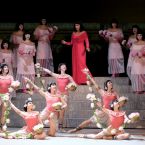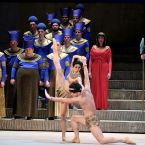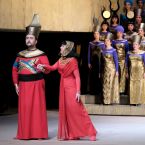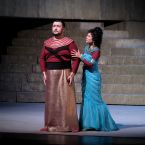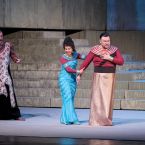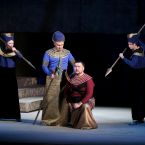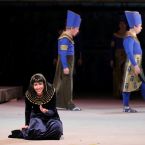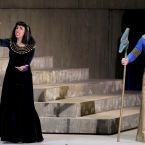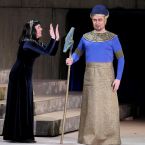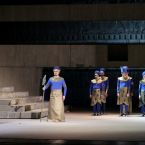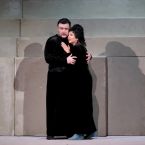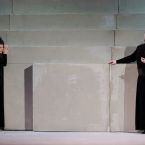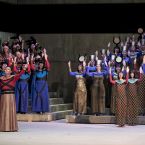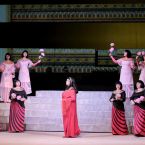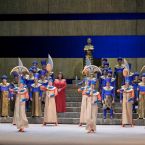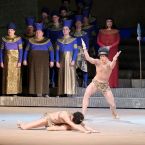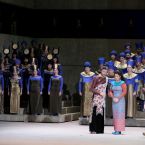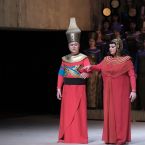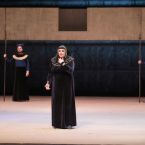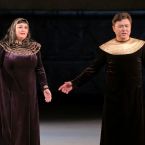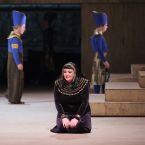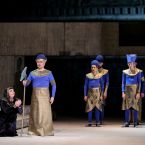History of creation of the opera
In 1868 the Egyptian government appealed to Giuseppe Verdi to compose the opera which it was planned to deliver to the first in new Cairo theatre. Egyptians not incidentally addressed to Verdi. The Italian by right was considered as one of the best opera composers of Europe — his "Lombardtsa", "Rigoletto", "Troubadour", "Traviata", "Don Carlos" didn't descend from the stage of the largest theatres of France, Austro-Hungary, Italy, Russia... But the moment was chosen very unsuccessfully, Giuseppe Verdi within a year received three crushing blows from life: one by one die his father, the best friend Antonio Barezzi and the composer Gioachino Rossini who is deeply esteemed by Verdi. Depressed by these losses, Verdi refuses to Egyptians.
Finishing of construction of the Suez Canal — the project which took out news about Egypt on the front pages of newspapers around the world — was one more realized ambitious dream of a hediv of Ismail Pasha ruling then Egypt. Hediv wanted to turn Cairo into "small Paris", and one of important stages of this "transformation", according to its plans, there was the creation in the center of the capital of new opera theatre of the European level calculated on 1000 viewers; one small feature of theater distinguishing it from the best European analogs of that time became... lodge for the harem of the hediv. However, in the plans of hediv surpassed itself: for worthy opening of theatre he dreamed of the opera which would be absolutely new work never executed earlier.
It was supposed to create the opera on the basis of the plot from the national history, and better — from history of Egypt of era of Pharaohs' which admired the travelers coming on coast of Nile. Hediv charged to write the plot of future performance to August Marietta, the well-known Egyptologist, the founder of the Egyptian museum in Cairo and national Service of antiquities. Mariette also had to act as the consultant at creation of suits and scenery for future unique performance. Working on the project, Mariette addressed to the friend Camille du Locle who held the post of the director of opera theatre in Paris at this time. Du Locle by then already was the librettist of one of great Giuseppe Verdi's creations — opera "Don Carlos". After "Don Carlos" who is very ambiguously apprehended by public, Verdi rejected almost all offers to du Locle, however on the Egyptian plot his look stopped. "I read the Egyptian history…It is written excellently, can become a basis for a number of bright stage settings and ensembles — Verdi wrote. — The hand of the professional is felt who not only is able to write, but also very well knows theatre... So who made it?" The original of the text offered Verdi didn't remain, and we still don't know, whether it was written by the hand of Mariett, or the idea of the great Egyptologist was issued in the scenario by someone else.
By estimates of researchers of creativity of Giuseppe Verdi, his participation in work on the libretto always was exclusively big, but this time he surpassed itself! The poet Antonio Gislantsoni who wrote the poetic libretto even received from him instructions, in what meter certain scenes have to be written! For all this this Verdi, of course, didn't forget about the main task and wrote magnificent music.
"Aida" was completely finished by the beginning of 1871. But its statement at Cairo opera theatre was late because ready scenery couldn't be taken out from Paris besieged by the German troops. Only on December 24, 1871 the premiere took place in the presence of the largest musicians of the world. Statement was recognized as all exclusively successful then the opera went over with unusual success at all largest theatres of the world. And at Milan opera theatre statement Giuseppe Verdi directed, and it so pleased temperamental and musical Milanese that all night long after the premiere on city streets melodies from "Aida" and other operas of Verdi were heard.
From history of statements of the opera
In the first statement of "Aida" the era of Pharaohs was recreated in the massive most beautiful scenery and unique suits created on sketches Marietta for an opera premiere in Paris by the well-known artist Eugène Lacoste. The first jewelry for the suit of the daughter of the Pharaoh Amneris were made of gold and jewels on the best Ancient Egyptian samples. Not less carefully artists and costumiers approached creation of appearance of other heroes of the performance.
The first part of Aida on the Egyptian earth in 1871 was performed by the star Theresa Stoltz; only almost in century the well-known part was sung by the Egyptian. In 1960 soprano Amira Kamel sang the Aida on the scene of the Cairo opera, then the Egyptian star Violetta Makkar performed also part Amneris. The "Egyptian" Radames "was born" only in 1974 performed by the famous tenor Hassan of Kami. In 1953 the director Clemente Fracassi picturized the well-known opera with world famous Sophia Loren's participation. Repeatedly the opera was executed in historical scenery at the bottom of the Egyptian pyramids in Giza, in Luxor — the temple complex located above on the Nile flow.
In Russia "Aida" was for the first time staged by the Italian troupe in 1875. The title part was performed by Theresa Stoltz. The premiere on the Russian scene took place on April 1, 1877 at the Maryinsky Theatre.
"Aida" was among the first statements of Krasnoyarsk opera and ballet theatre. The premiere took place on May 6, 1979. Production group: the conductor – I. Shavruk, the production director – M. Vysotsky, the artist – G. Sotnikov, the chorus master – E. Mayevsky, the ballet master – D. Tkhorzhevsky. First performers: Nina Abt-Neyfert, Zhaneta Tarayan, Vladimir Yefimov, Grigory Kontsur.
With this performance the theatre went on tour about the country. So, in Komsomolsk-on-Amur in 1984 newspapers wrote: "The performance comprises interesting and exact readings of the plan of the composer and modern creative approach to judgment of the conflicts of the opera. It finds reflection in intonations of musical characteristics, a game manner, plasticity of all performance …"
"This theatre is still very young and attempt of the appeal to so grandiose work deserves attention and respect. The collective has strong professional structure of vocalists, the harmonious, balanced chorus, the orchestra as a part of which there are a lot of great soloists" (the Tikhookeansky Komsomolets newspaper, Vladivostok).
.jpg)
